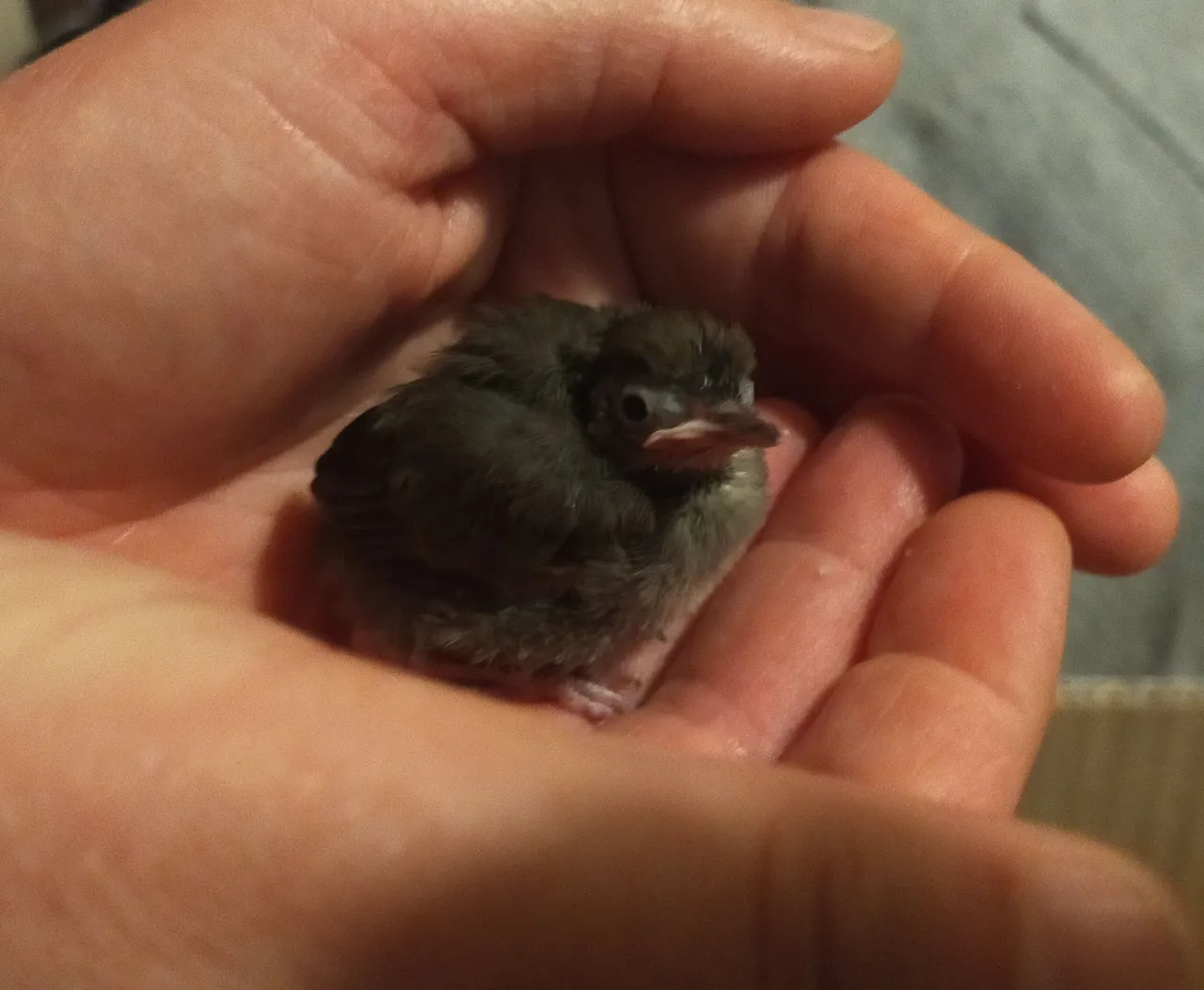
A little bird to save!
Today when I left the office where I work in the morning I had a tender encounter.
In the parking lot across from the office there was a small bird standing still and unmoving in the middle of the street right where the cars come in and out.
I walked over and the little bird didn't move an inch.
It didn't look very good because its legs were slightly spread apart.
I had only two choices:
- pretend nothing happened and go home
- pick up that little bird and bring it back to my house.
In the parking lot where I met the little bird there are many cats.
The chances of survival were therefore zero or very close to zero.
By not moving the little bird would have ended up under a car or become a cat's meal.
I quickly discarded the first option and picked up the bird, laid it in a cardboard box I had in the trunk of my car, put the box on the passenger seat next to me and headed for my house.
When I got home I was greeted by the happiness of my daughter who is 7 years old and as soon as she saw the bird she started jumping around.
When my daughter is excited and happy she jumps :)
I got a bigger cardboard box and put the bird in that cardboard box.
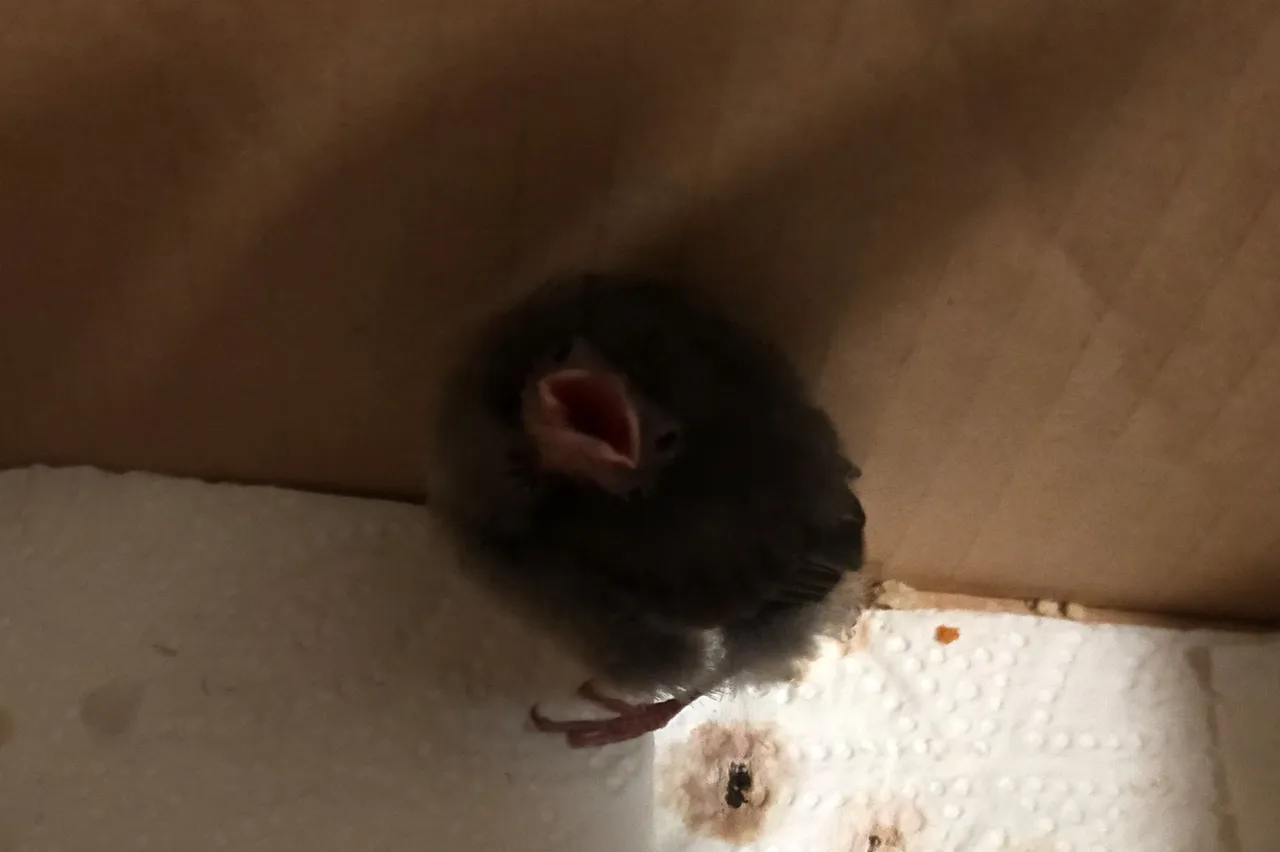
I took a syringe, removed the needle and filled it with water.
I slipped a drop of water near the bird's beak and it immediately opened its mouth to drink.
Poor little bird was definitely dehydrated.
I didn't know what kind of bird it was, it couldn't fly so it was a chick but I didn't know what species it was.
I downloaded an app on my phone to recognize the species by its chirping and the app returned the following result: Jackdaw.
To be sure, I also called a friend of mine who I know is passionate about birds and seeing the photo she told me that the bird I had saved was not a jackdaw but a blackbird.
I trusted the answer of my friend and I hope that the users of the community Feathered Friends can give me further confirmation or, why not, even denial.
I immediately tried to give the bird something to eat: a crumb of bread that I wet with a drop of water but the bird did not seem to want to open its mouth.
After a few attempts, my daughter and I noticed that when we moved the box, the bird opened its mouth immediately.
Perhaps, I thought, the mother when she arrived at the nest with food for her young, resting on the nest, moved the nest in much the same way.
The baby bird started to eat and soon after was standing perfectly on its two legs.
It was hopping and chirping: a real songbird :)

In the afternoon I went to a pet store and the owner gave me a protein gruel to dilute in water.
Now the bird seems to have recovered and seems to be doing much better.
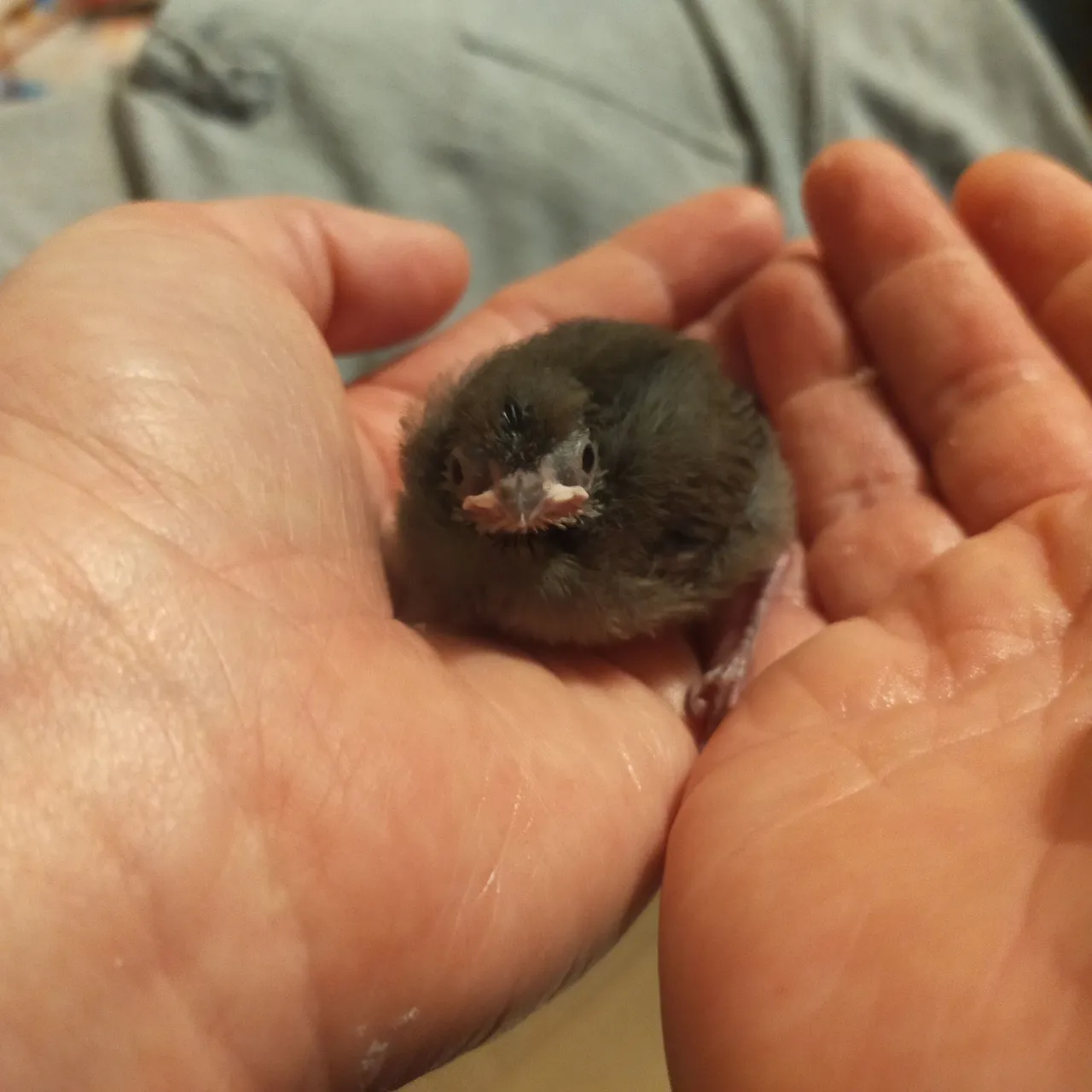
What to do now?
My daughter would like to keep him but I live in an apartment and I don't want a wild bird to live in a cage for the rest of its life, unhappy and against nature, just to satisfy my daughter's desire.
If I lived in a house with a garden, I could have built an aviary and set it free as soon as it learned to fly, and this would have been a viable choice, but not optimal for the bird.
Among other things, being so small, it could mistake us as its parents and when it is free to fly it could be in danger if it were to meet humans who are not very "human".
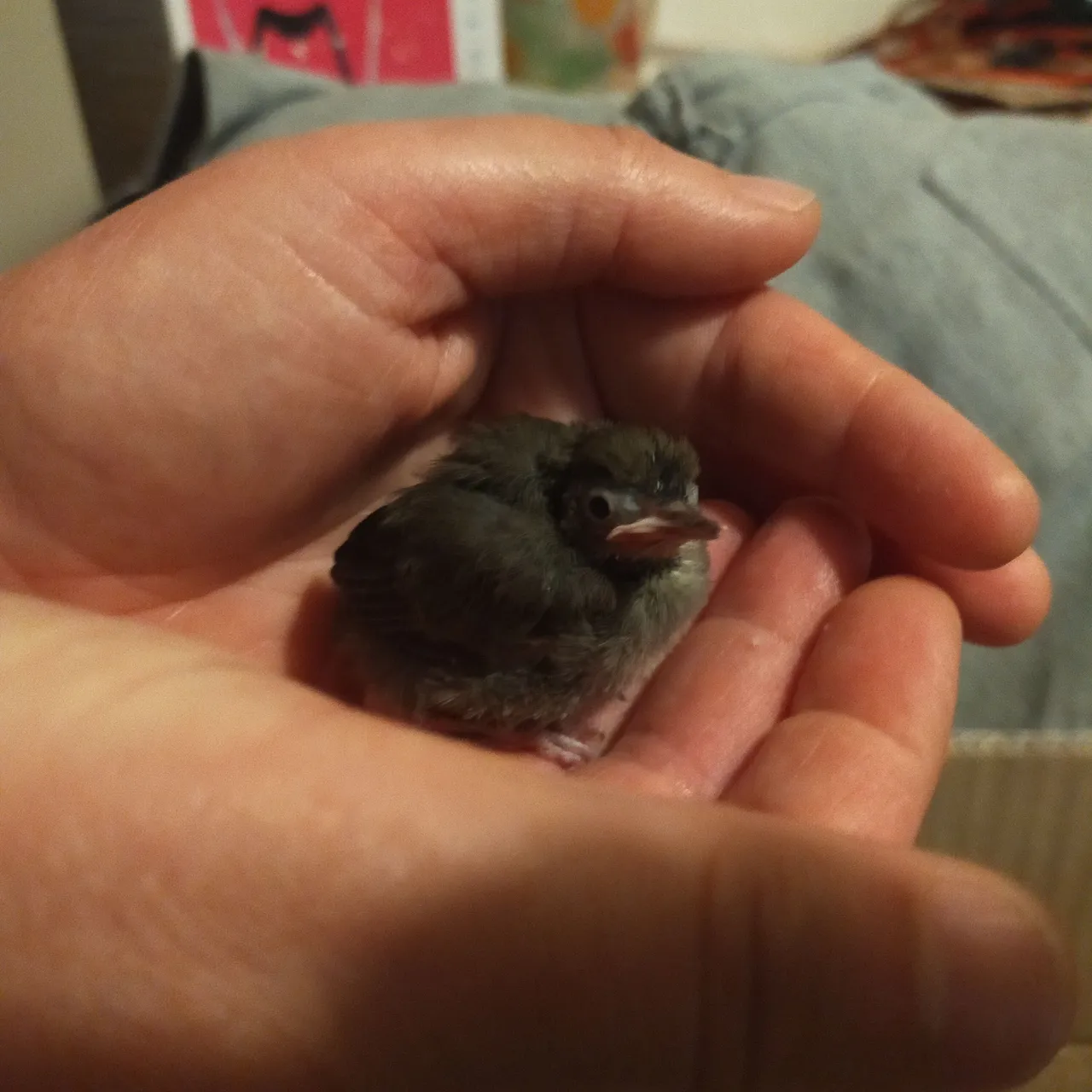
The right decision is only one and it is one I have made before, two years ago, for another small flier in need: a baby bat.
In July 2019, a small bat came onto the veranda of my house at night and, poor thing, got stuck inside a cardboard box I kept on the veranda.
The unfortunate bat got stuck with its wings glued to a strip of glue that was on the edge of the cardboard I kept on my veranda.
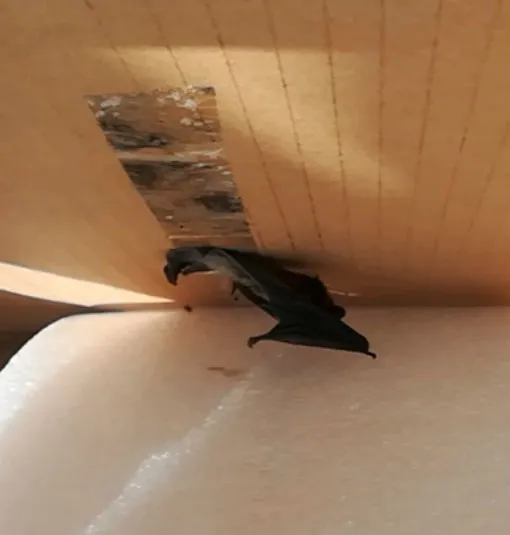
There was no way we could remove the wings of the little bat because the glue was very strong and also because we were afraid that the wings might tear.
So I cut out the cardboard and made many phone calls to veterinarians, WWF and various associations, but they were no help: they refused to take the bat because it was an animal that was not their responsibility.
At that point my wife, daughter and I took the little bat to the police station in my city.
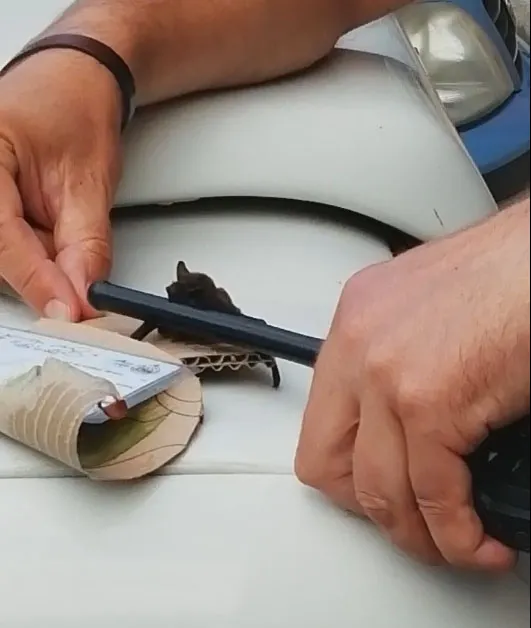
One of those policemen was really fond of bats (what a luck) and with a lot of patience and delicacy he detached the wings from the glue and freed the bat.
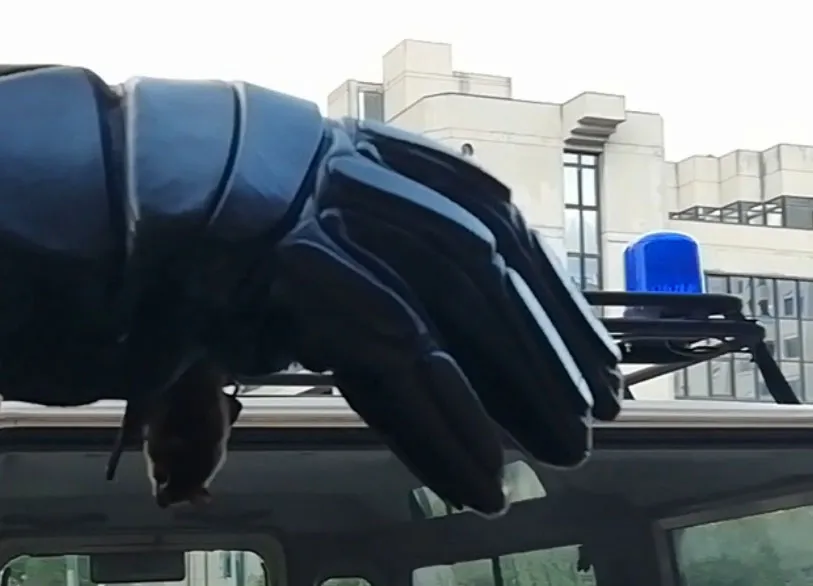
After signing the report of the incident, the policemen reassured me that they would take the little bat to the Wildlife Rescue Center.
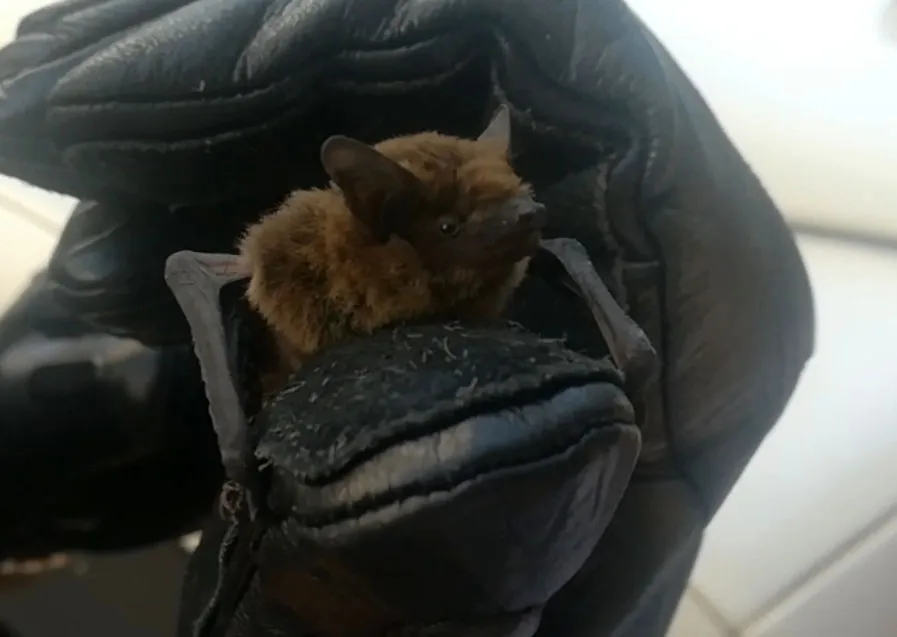
And that's why this time, strengthened by past experience, I know exactly what to do and where to take the little blackbird chick I found this morning.
Tomorrow I will take the little bird to the Wildlife Recovery Center in my region.
The problem is that the Center for Wild Animal Recovery closest to my home is 50 km away but that's okay because it will be an opportunity to take a nice trip out of town.
But above all it will be another opportunity to teach my daughter that animals, especially if they are wild, are not toys and we cannot keep them in cages, but they must be respected as we must always respect every small living being, especially if they are in a state of difficulty.
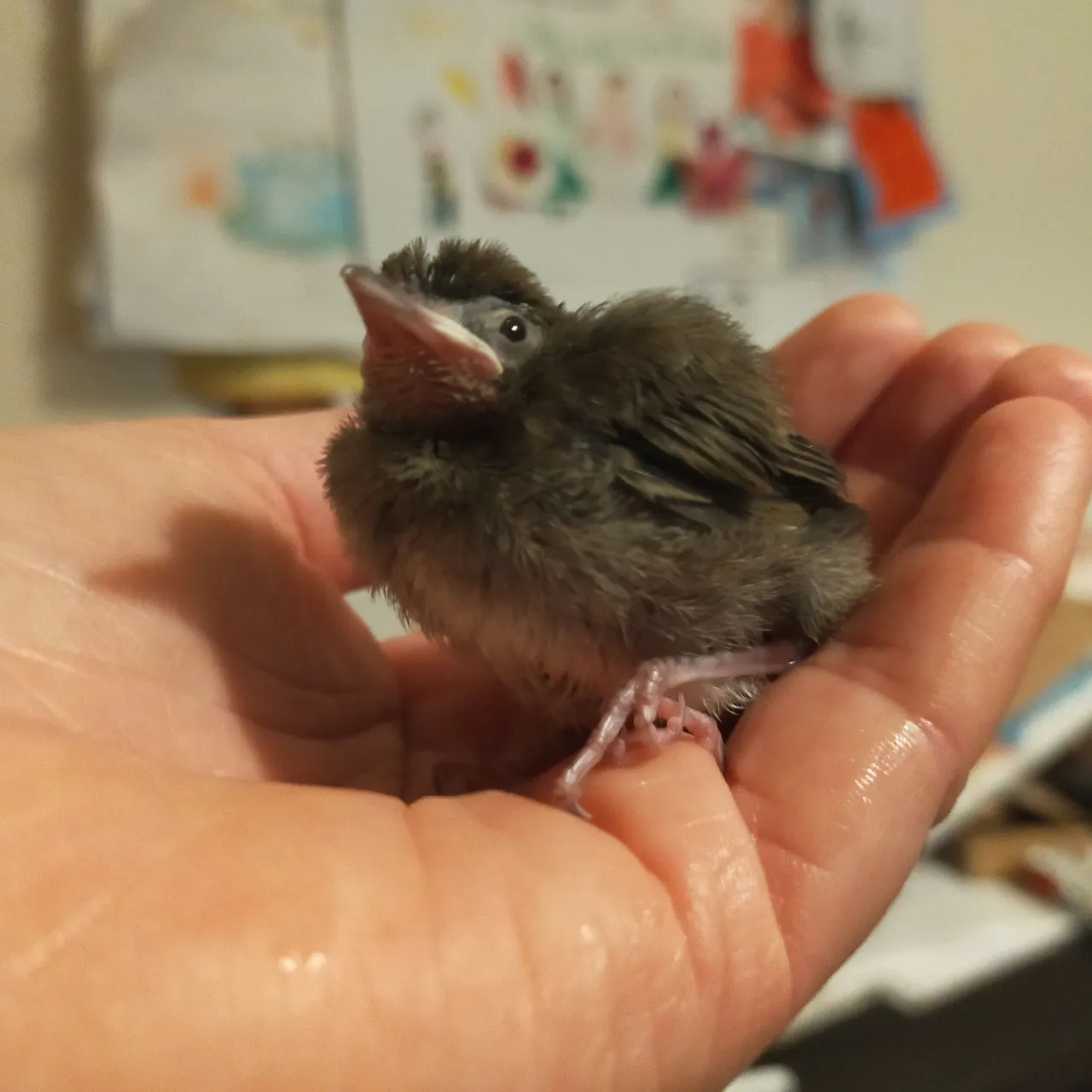



Un piccolo uccellino da salvare!
Oggi quando sono uscito dall'ufficio in cui lavoro la mattina ho fatto un tenero incontro.
Nel parcheggio di fronte all'ufficio c'era un piccolo uccellino fermo e immobile in mezzo alla strada proprio nel punto in cui entrano ed escono le macchine.
Mi sono avvicinato e l'uccellino non si è mosso di un centimetro.
Non sembrava stare molto bene perchè aveva le zampe leggermente divaricate.
Avevo solo due alternative:
- far finta di niente e tornare a casa
- prendere quell'uccellino e portarlo a casa
Nel parcheggio dove ho incontrato il piccolo uccellino ci sono molti gatti.
Le probabilità di sopravvivenza erano quindi pari allo zero o molto vicine allo zero.
Non muovendosi l'uccellino sarebbe finito sotto una macchina o sarebbe diventato il pasto di un gatto.
Ho scartato subito la prima opzione e ho raccolto l'uccellino, l'ho adagiato in un cartone che avevo nel cofano della mia macchina, ho messo il cartone sul sedile del posto passeggero di fianco a me e mi sono diretto verso la mia casa.
Arrivato a casa sono stato accolto dalla felicità di mia figlia che ha 7 anni e che come ha visto l'uccellino ha iniziato a saltellare.
Quando mia figlia è emozionata e felice saltella :)
Ho preso un cartone più grande e ho messo l'uccellino in quel cartone.

Ho preso una siringa, ho tolto l'ago e l'ho riempita di acqua.
Ho fatto scivolare una goccia d'acqua vicino al becco dell'uccellino che ha subito aperto la bocca per bere.
Poverino era sicuramente disidratato.
Non sapevo che uccello era, non sapeva volare e quindi era un pullo ma di che specie proprio non lo sapevo.
Ho scaricato un app sul telefono per riconoscere la specie tramite il cinguettio e l'app mi ha restituito il seguente risultato: Taccola.
Per essere sicuro ho chiamato anche una mia amica che so essere appassionata e studiosa di volatili e vedendo la foto mi ha detto che l'uccellino che avevo salvato non era una taccola ma un merlo.
Mi sono fidato della risposta della mia amica e spero che gli utenti della comunità di Feathered Friends possano darmi ulteriori conferme o, perchè no, anche smentite.
Ho provato subito a dare qualcosa da mangiare all'uccellino: una mollica di pane che ho bagnato con un goccio di acqua ma l'uccellino non sembrava voler aprire la bocca.
Dopo qualche tentativo io e mia figlia abbiamo notato che muovendo la scatola l'uccellino apriva la bocca subito.
Forse, ho pensato, la mamma quando arrivava al nido con il cibo per i suoi piccoli, poggiandosi sul nido, muoveva il nido più o meno allo stesso modo.
L'uccellino ha iniziato a mangiare e poco dopo si reggeva perfettamente sulle sue due zampe.
Saltellava e cinguettava: un vero e proprio canterino :)

Nel pomeriggio sono andato in un negozio di animali e la proprietaria mi ha dato una pappetta proteica da diluire nell'acqua.
Adesso l'uccellino sembra essersi ripreso e mi sembra che stia molto meglio.

Cosa fare adesso?
Mia figlia vorrebbe tenerlo ma io vivo in un appartamento e soprattutto non voglio che per accontentare il desiderio di mia figlia un uccello selvatico debba vivere infelice e contro natura all'interno di una gabbia per il resto della sua vita.
Se vivevo in una casa con un giardino avrei potuto costruire una voliera e liberarlo appena avesse imparato a volare e questa già sarebbe stata una scelta percorribile ma comunque non ottimale per l'uccellino.
Tra l'altro essendo così piccolo potrebbe scambiare noi come genitori e quando sarà libero di volare potrebbe essere in pericolo se dovesse incontrare umani poco "umani".

La decisione giusta è solo una ed è una decisione che ho già preso in passato, due anni fa, per un altro piccolo volatile in difficolta: un piccolo pipistrello.
Nel luglio del 2019 un piccolo pipistrello è entrato di notte nella veranda di casa mia e, poverino, è rimasto incastrato all'interno di un cartone che tenevo in veranda.
Lo sfortunato pipistrello è rimasto bloccato con le ali incollate ad una striscia di colla che era sul bordo del cartone che avevo conservato nella mia veranda.

Non siamo riusciti in nessun modo a staccare le ali del piccolo pipistrello perchè la colla era molto resistente e anche perchè avevamo paura che le ali potessero strapparsi.
Così ho ritagliato il cartone e ho fatto tante telefonate a veterinari, wwf e associazioni varie che però non sono state di aiuto: si sono rifiutate di prendere il pipistrello perchè era un animale non di loro competenza.
A quel punto io, mia moglie e mia figlia abbiamo portato il piccolo pipistrello alla centrale dei vigili urbani della mia città.

Uno di quei vigili era proprio un appasionato di pipistrelli (che fortuna) e con tanta pazienza e delicatezza ha staccato le ali dalla colla e ha liberato il pipistrello.

Dopo aver firmato il verbale di constatazione dell'accaduto, i vigili mi hanno rassicurato che avrebbero portato il piccolo pipistrello al Centro di recupero animali selvatici.

Ed ecco perchè questa volta, forte dell'esperienza passata, so bene cosa fare e dove portare il piccolo pullo di merlo che ho trovato questa mattina.
Domani porterò il piccolo uccellino al Centro di Recupero Animali Selvatici della mia regione.
Il problema è che il Centro di Recupero animali selvatici più vicino a casa mia è a 50 km di distanza ma non fa niente perchè sarà l'occasione per fare una bella gita fuori città.
Ma sarà soprattutto un ulteriore occasione per insegnare a mia figlia che gli animali soprattutto se selvatici non sono giocattoli e non possiamo tenerli in gabbia ma vanno rispettati come va sempre rispettato ogni più piccolo essere vivente soprattutto se si trova in uno stato di difficoltà.
E tu caro lettore cosa avresti fatto al mio posto?


